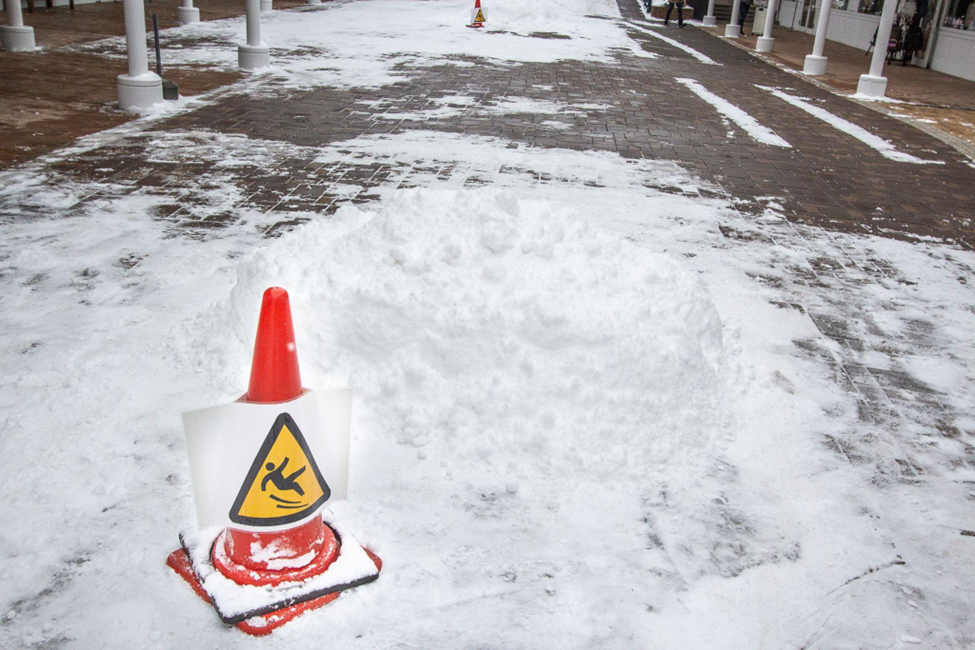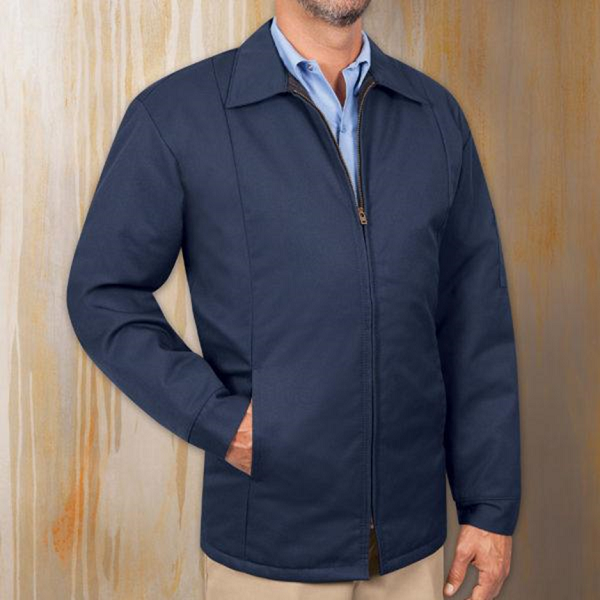As winter approaches, temperatures plummet, days become shorter, and much of the country is plunged into icy weather marked by strong winds and snow.
These conditions pose a unique set of challenges for businesses operating through the winter months as workers are often exposed to slippery workspaces, wet and slippery roads, and winter-related conditions like frostbite and cold stress.
It’s important to provide your workers with suitable uniforms and clothing to protect them against cold weather conditions. However, combining the best workwear with essential workplace winter safety tips on how to prepare your workers for labor during these cold months can help you conquer the hazardous conditions with prevention instead of cure.
If you want to make your workplace as safe as possible during the winter months, this guide explains exactly which cold weather hazards you need to prepare for and how to provide your workers with protective workplace uniforms tailored to their working environment.
What Are Common Cold Weather Hazards?

There are several cold weather hazards businesses should consider and prepare for each winter. The most common cold weather hazards in the workplace, especially if located outdoors, include:1
- Cold stress: When exposed to the cold, the body starts internalizing to maintain a stable core temperature. If workers are out in the cold unprotected for too long, their bodies may lose the ability to control their internal temperature, additionally leading to complications like hypothermia.
- Frostbite, trench foot, and hypothermia: These are all dangerous health conditions related to overexposure to cold temperatures.
- Slipping and falling: Working on icy or wet surfaces can cause serious injuries if workers aren’t careful or equipped with the right shoes.
- Colds and flu: These illnesses are related to cold temperatures and are particularly prevalent among workers who don’t keep warm enough.
Four Cold Weather Safety Tips for Employees
Although you have no control over the weather, providing cold weather safety tips for employees while ensuring your business is prepared for possible injuries and emergencies can be life-saving. Following these four workplace safety tips will help you prepare for these difficult situations and ensure your workers stay healthy and perform their best, even in freezing temperatures.
1. Educate Workers About the Dangers of Cold Stress
The National Institute of Occupational Safety and Health (NIOSH) defines cold stress as a severe condition where the body can no longer regulate and maintain a normal and healthy body temperature. Cold stress occurs when workers or employees are exposed to long hours in freezing temperatures, and susceptibility dramatically increases without a protective winter uniform.
In extreme weather, the body needs to work harder to maintain a healthy body temperature, and blood flow moves toward the body’s inner core, leaving the skin, hands, feet, and face more vulnerable to external temperatures. If the worker is overexposed and not wearing a protective safety uniform, they can develop more severe conditions like frostbite and hypothermia.
It’s vital for all employees, whether working inside or outside, to know the risks related to cold stress, and recognize the signs they need to get out of the cold and warm up. These symptoms include red skin, tingling or pins and needles, blisters, cramps, numbness, and uncontrollable shivering.
The Occupational Safety and Health Administration (OSHA) recommends wearing warm clothes, staying dry, heating up indoors, and drinking hot liquids to mitigate the risk of cold stress and its subsequent health issues.2
2. Prepare for Winter Weather-Related Injuries
Stocking up on first-aid kit essentials and ensuring there is more than enough to go around is a winter workplace priority. The most common items include gloves, medical adhesives, cotton swabs, medical scissors, forceps, bandages, tweezers, first-aid dressing, and wound cleaners.
Educating workers on basic first-aid practices like checking for consciousness and body temperature, opening airways, checking for circulation and bleeding, and how to perform CPR can save lives. Ensure that there is someone on site who is trained to provide aid for winter-related conditions and injuries.
3. Teach Workers How to Dress to Keep Warm
Teaching workers to dress for cold temperatures can help prevent situations like cold stress and other winter illnesses.
The best way to stay safe during freezing weather is to minimize direct skin contact with cold surroundings. Keeping an eye on the weather forecast can help employees make informed choices on what to wear.
Staples for cold and wet weather conditions include:
- Thermal underwear and socks
- Boots or shoes with high traction
- Moisture-wicking clothing like waterproof windbreakers and jackets
- Thick scarves and headwear
In most cases, a high-quality winter work uniform will supply most of the items necessary to keep employees safe and warm.
4. Provide Workers With Winter Uniforms

Whether your employees work mostly indoors, outdoors, or both, a comfortable and functional winter uniform protects them from lengthy exposure to cold temperatures, slippery surfaces, and possible seasonal illness.
Opt for lined jackets, quilted or insulated vests, long-sleeved industrial work shirts, and warm, comfortable pants. Workers should also have shoes that keep their feet warm while improving balance and traction when working on slippery and cold surfaces.
Additionally, consider visibility conditions in the darker winter months. High-visibility clothing can provide an extra layer of safety to a winter uniform.
How Prudential Overall Supply Can Help Keep Your Workers Safe
Your employees are one of your business’s most important assets and keeping them safe and healthy during winter will help your business thrive. Prudential Overall Supply understands the specialized requirements of winter work uniforms. We supply top-quality industrial protective workwear and safety-oriented winter work jackets and outerwear across multiple industries.
Explore our website today to discover superior, field-proven work uniforms that will help your business be a top performer, regardless of the weather.
Sources:
